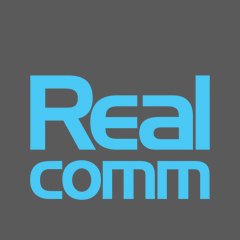The Balance Between Efficiency, Experience and Hyper-Surveillance in Smart Connected Buildings

It is safe to say that the built environment has gone beyond basic building automation. Simply focusing on systems such as HVAC and lighting has given way to a fully connected infrastructure where security, access, lifts, parking and every other building technology is connected to the network, integrated and becoming more and more interoperable.
This hyper-connectivity is exceeding expectations when it comes to the five primary objectives of a smart building: energy and natural resource conservation, operational efficiency, enhanced occupant experience, improved sustainability and financial optimization. Using technology to operate a building with extreme precision and delivering 21st century experiences is becoming the new standard.
In order to achieve this high level of technical sophistication a combination of various technologies is required; a standardized IP building network, some form of operating system, a variety of smart devices, numerous applications and cloud connectivity. These fundamental technologies can be weaved together to achieve the goals of a next-generation building.
 There are multiple positive goals and objectives related to a smart building, but this extreme level of technology utilization also gives way to the possibility of creating an environment of over-surveillance. HVAC equipment, lights, voice activated devices such as Alexa and Siri (and any other electrical device that might include a microphone, camera or sensor) could be listening and/or watching and gathering an enormous amount of data, providing insight with unintended consequences.
There are multiple positive goals and objectives related to a smart building, but this extreme level of technology utilization also gives way to the possibility of creating an environment of over-surveillance. HVAC equipment, lights, voice activated devices such as Alexa and Siri (and any other electrical device that might include a microphone, camera or sensor) could be listening and/or watching and gathering an enormous amount of data, providing insight with unintended consequences.
A university that installed sensors for a seemingly harmless activity came to discover a pattern of tardiness of some of its professors, which led to some interesting conversations.
This is just a small example of the type of data that could be collected and combined with other data sets to come up with conclusions about human activity in the building. At some point we will be able to surveil peopleís activities 24 hours a day. Yes, your alarm clock, smart bed and/or Fitbit will continue the data gathering even as you sleep.
Many people say that privacy is already gone and that we need to get used to the new normal. Privacy isnít important until it is. Imagine a confidential conversation between employee and employer, disclosure of a medical issue to HR, a board meeting where a new product is being introduced, data measuring time spent in the restrooms or simply a personal conversation between co-workers.
The biggest potential issues include: Who is collecting the data? What is it being used for? Can unathorized people access it? Is it protected? Are machines making decisions? Who writes the rules? Who owns it? Perhaps most importantly, in the event of a privacy breach resulting in damages, who is liable?
Imagine a new office tower under construction. The architect designs a high-tech board room with a next-generation lighting system that contains sensors and microphones for various applications. Consultants configure the technology, integrators install it, a service provider manages it and it shares a common network provided by the building owner. At a high-level board meeting, a sensitive idea is discussed and the information that had been collected is breached either internally or externally. Who is liable?
As the world becomes more technologically advanced, buildings included, organizations are going to have to take a position on privacy. With GDPR in Europe and CCPA in California leading the discussion of the West and Chinaís aggressive data collection and monitoring policies providing an exact opposite approach, the topic of privacy will continue to be one of the major societal issues in the years to come.
From a technical standpoint, many experts argue that China is more than five years ahead of the US. The creation of the Social Credit Scoring which is slated for Phase 1 completion in 2020 is achieving data collection, analysis and action on a societal level. Additionally, the surveillance state created by an extraordinary network of next-generation cameras combined with cloud computing and AI is able to track citizens on a real-time basis.
Before anyone says privacy is dead it is a worthwhile exercise to better understand the technology that is deployed today in other parts of the world, including China, to determine what side of the privacy discussion they are on.
We will be taking on the subject of privacy as it relates to smart connected buildings and corporate campuses at CoRE Tech 2019 next week in San Jose. The following is a summary of the discussion. Hope to see you there!

This Week’s Sponsor
RealFoundations is a professional services firm focused on helping companies that develop, build, own, operate, service, occupy or invest in real estate run better.
Read Next
 5/29/2025
5/29/2025
AI Canít Fix Bad Data. These Ideas Can Get You on the Right Track. Real estate visionaries constantly integrate innovative technology to make their organizations more efficient.
 5/22/2025
5/22/2025
Managing Building Automation and Integration Like an Investment Portfolio What if your building automation and integration decisions were managed with the same precision, discipline, and long-term vision as Warren Buffettís investment portfolio?
 5/15/2025
5/15/2025
Tech, Talent and Transformation: 2025 Digie Finalists Announced For 27 years, Realcomm has presented the Digie Awards to acknowledge companies, real estate projects, technologies, and individuals that have advanced the commercial real estate industry through the strategic use of technology, automation, and innovation.
 5/15/2025
5/15/2025
Empowering Space Management with Data-Driven Visualization For effective CRE space management, itís critical to centralize lease data, maximize rental square footage (RSF), improve energy efficiency and reconfigure spaces to meet changing needs.



%20(1)%20(1)%20(1).png)







